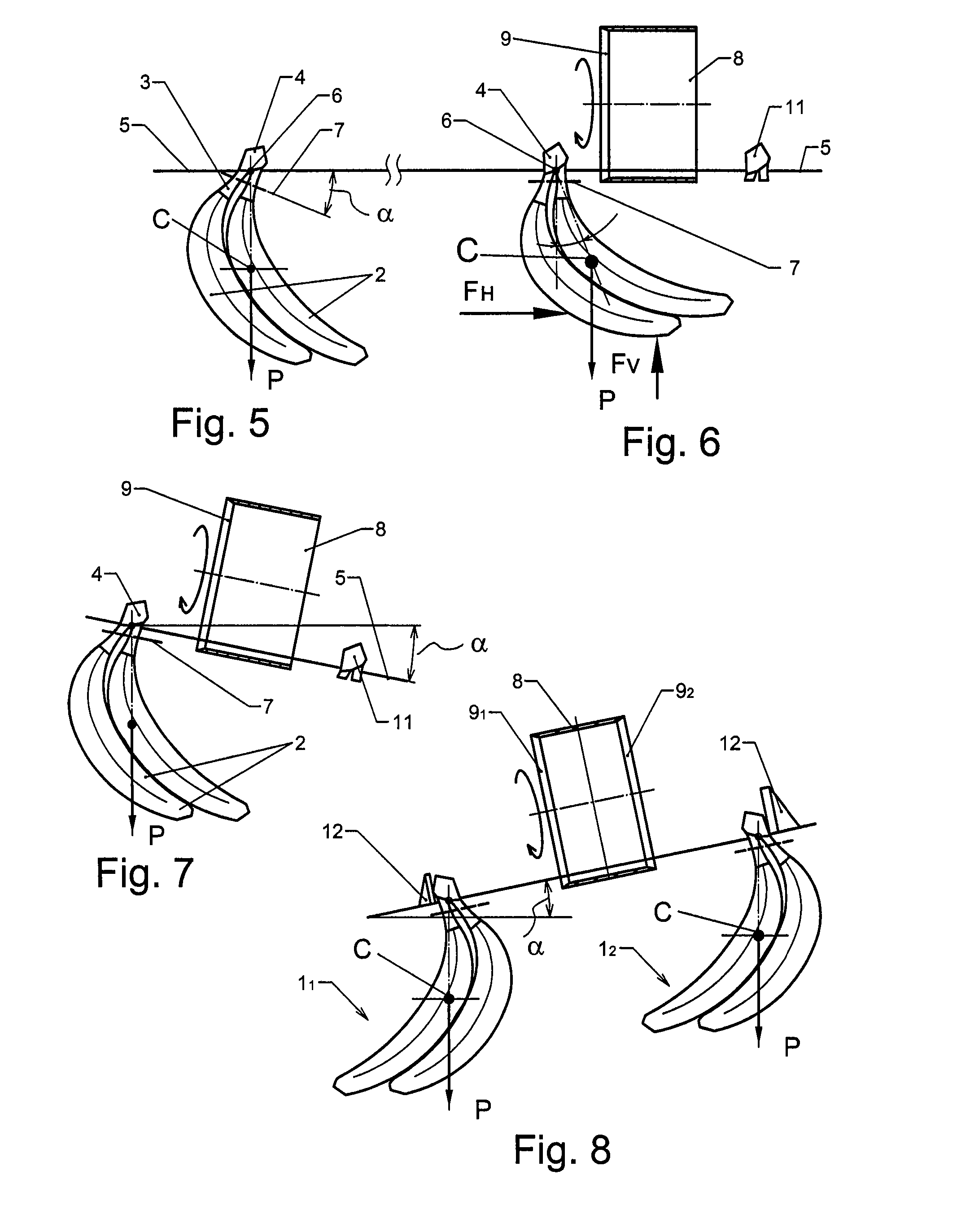Method for separating banana clusters into separate bananas
a technology of banana clusters and bananas, applied in the field of industrial banana processing, can solve problems such as banana pulp, and achieve the effect of preserving the market quality of individual bananas and easy cutting of fruit stalks
- Summary
- Abstract
- Description
- Claims
- Application Information
AI Technical Summary
Benefits of technology
Problems solved by technology
Method used
Image
Examples
Embodiment Construction
[0033]A cluster (1) of bananas (2) (See FIG. 1), with fruit stalks (3) that fan from the crown (4), is hung on the cable (5) that is threaded between bananas. As seen in FIG. 1, the point (6) of hanging the cluster on the cable is the place of convergence of fruit stalks. FIG. 1 also shows a desirable direction (7) for cutting the fruit stalks, which, taking into account the shape of the cluster of bananas, is oriented at an angle (α). For bananas of different types, that angle constitutes approximately 25-45°. FIG. 1 also shows the force of gravity (P) on the freely hanging cluster, as related to the cluster's center of gravity (C), which is on the same vertical line with the point of the hanging cluster.
[0034]In the analyzed example (See FIG. 2), the cluster is hung on the cable in such a way that its convex side is oriented towards the cutter (8). The cutter is a hollow cylinder that revolves, its butt being the cutting edge (9). The cutter (See FIG. 3) is installed so its revolu...
PUM
 Login to View More
Login to View More Abstract
Description
Claims
Application Information
 Login to View More
Login to View More - R&D
- Intellectual Property
- Life Sciences
- Materials
- Tech Scout
- Unparalleled Data Quality
- Higher Quality Content
- 60% Fewer Hallucinations
Browse by: Latest US Patents, China's latest patents, Technical Efficacy Thesaurus, Application Domain, Technology Topic, Popular Technical Reports.
© 2025 PatSnap. All rights reserved.Legal|Privacy policy|Modern Slavery Act Transparency Statement|Sitemap|About US| Contact US: help@patsnap.com



